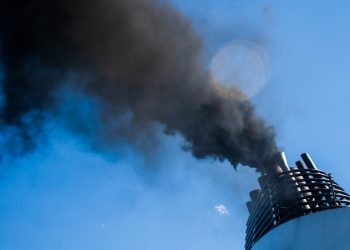Carbon taxes will increase, favouring energy efficient ships and requiring closer co-operation between owners and charterers, says Will Fray, Director, Maritime Strategies International
The inclusion of shipping in the European Union Emissions Trading System should be seen as ‘shepherding’ the shipping industry towards its global goals for a low carbon future, rather than as a source of serious disruption.
However it also represents another legal and administrative burden for shipowners and their customers – and is unlikely to be the last of its kind. Perhaps more importantly for owners, it will increase the bifurcation of the market, with high efficiency, low emission vessels earning a premium as carbon penalties increase.
The extension of emissions trading to shipping forms part of the European Commission’s ‘Fit for 55’ group of regulatory initiatives. As such vessels will need to purchase allowances for carbon emissions (calculated from tank to wake only) on voyages between EU ports and while within an EU port.
There will be no free allowances issued for shipping and the price of carbon credits will be set by the carbon market in a similar way to the current ‘market-based’ system covering all industries included in the ETS.
A (presumably temporary) effect as far as owners are concerned, is that the institutions of the European Union are divided about the finer details of the policy. Since the publication of the Commission’s original proposals, the European Parliament has proposed significant adjustments.
The European Council of Ministers has sided closely with the original Commission proposal but also adopted a few of the measures proposed by the European Parliament including expanding scheme to cover NOx and CH4 from 2024. All three need to agree before anything comes into effect, process expected to conclude by the end of this year.
Whatever the final shape of the regulations, given the current cost of carbon credits in the EU of around EUR 85 per tonne of CO2, the move initially seems significant. Each tonne of LSFO consumed creates 3.114 tonnes of carbon dioxide; without any concessions, the full carbon cost would be equivalent to EUR 265/T of fuel (equivalent to around a third of bunker costs at current prices).
However, the original proposal by the European Commission (mostly favoured by the European Council) softens the face-value impact. In addition to a 50% reduction for voyages starting/ending outside the EU, the policy also provides for a gradual increase in the share of emissions liable for an allowance.
Only 20% of verified emissions would require allowances for the first year of implementation under this policy (likely starting in 2024, depending on decisions yet to be made), rising to 100% of verified emissions three years later.
For an illustrative example – using data based on the Commission’s original proposals for the ETS – we take a Capesize dry bulk voyage carrying iron ore from Ponta da Madeira in Brazil to Rotterdam (4,100 nm). Assuming a Capesize speed of 14 knots this would take around 12 days: at 62 tonnes per day this corresponds to 744 tonnes of fuel consumed, emitting 2,300 tonnes of CO2. As the voyage starts outside Europe, only half of the emissions qualify for allowances – 1,150 tonnes.
The cost impact at the start of the ETS regulation will be minimal, as just 20% of this is required to be covered – 230 tonnes. Therefore, at EUR 85/T, the total cost for the carbon allowance would be EUR 19,550, plus a small addition for consumption in port. This compares with a fuel cost for the voyage of around EUR 520,000 (equivalent to 4%).
But three years later, the cost for the carbon allowance would rise to almost EUR 100,000 – equivalent to 20% of the total fuel bill for the voyage. The EU has fair grounds to believe that the ETS won’t perceptibly impact the trade in commodities, on the basis that 172,000 tonnes of iron ore on this vessel would currently be worth over EUR 15 Mn. An impact assessment was undertaken by the European Commission which showed that prices for key commodities would be affected by less than 0.5% in most cases by 2030, and up to 1.8% in 2050 (iron ore).
But high carbon allowance costs will impact the type of ship preferred for the voyage, offering an additional incentive to support the employment of fuel-efficient (hence supporting energy saving technology) and low/zero carbon Capesize ships. Over time the ETS will be another factor behind a widening charter rate differential between vessels based on different fuel types and energy efficiency.
Allowances will be collected annually, following the provision of vessel DCS data through the European MRV system. Technically, the company named on the ship’s Document of Compliance (i.e. the owner of the vessel) is liable for the cost for carbon allowances – this means that owners will need to make provisions to collect the allowance cost from charterers through a bilateral arrangement.
Whilst acknowledging the good intentions of the EU’s Fit for 55 initiatives, another level of administrative/legal burden has been forced upon shipowners and represents an additional set of pathways and regulations in addition to those applied by the IMO. With other countries/regions around the world also considering their own unilateral emissions regulation frameworks for regional shipping, the complexity of requirements to meet emissions regulations will more than likely increase.
The views presented are only those of the author and do not necessarily reflect those of SAFETY4SEA and are for information sharing and discussion purposes only.




























































